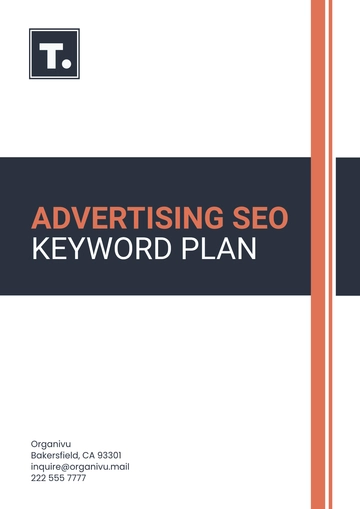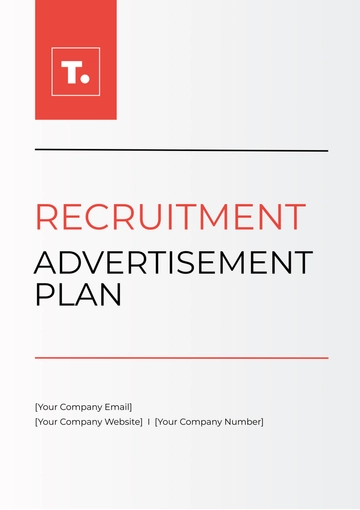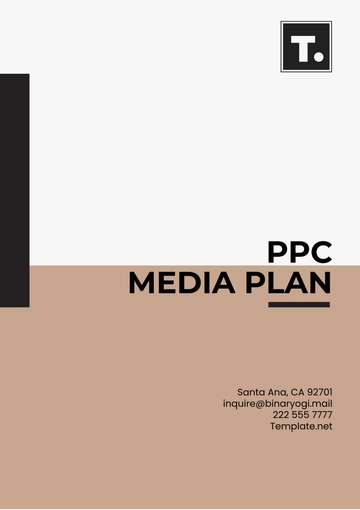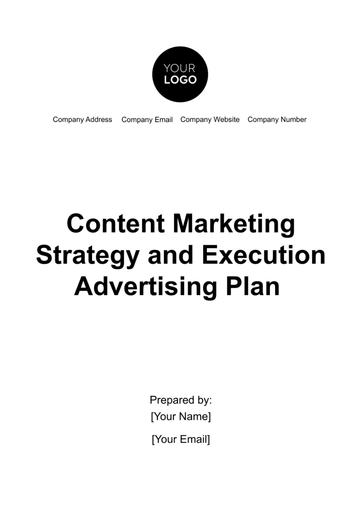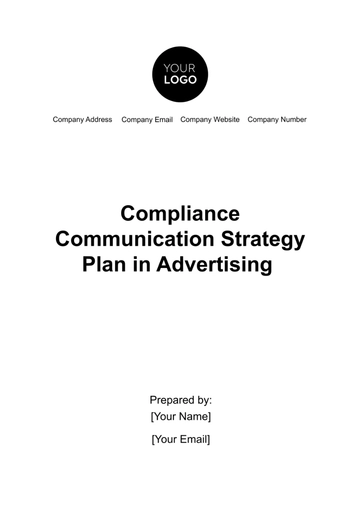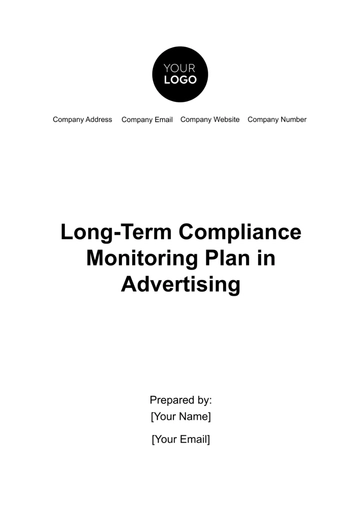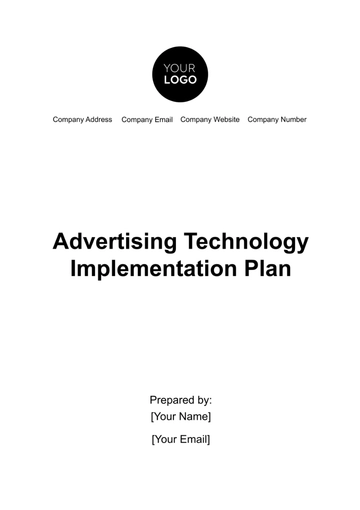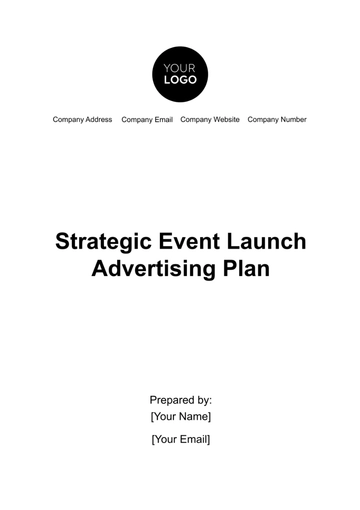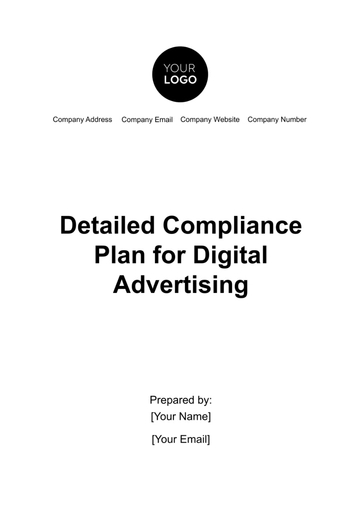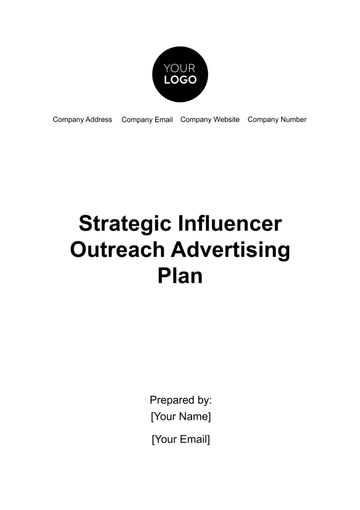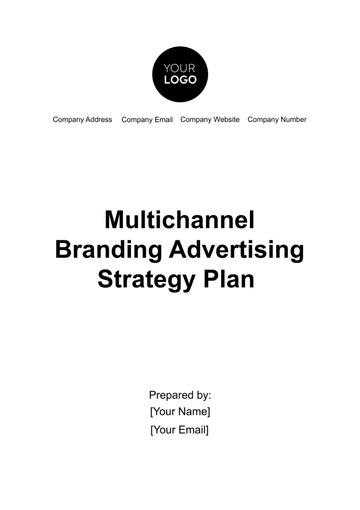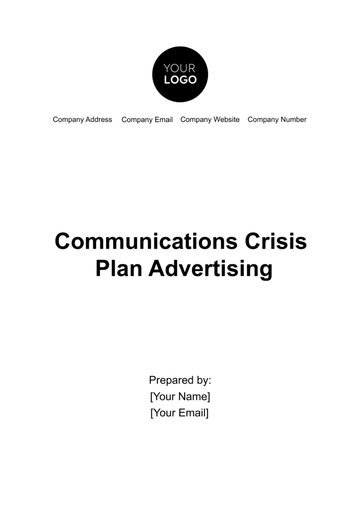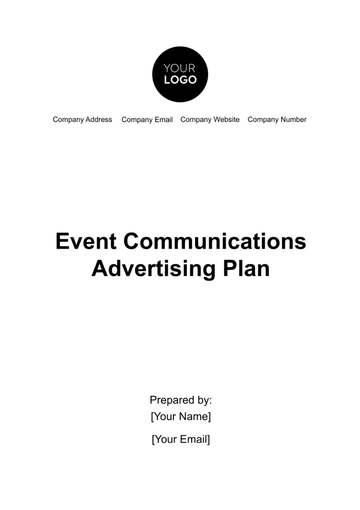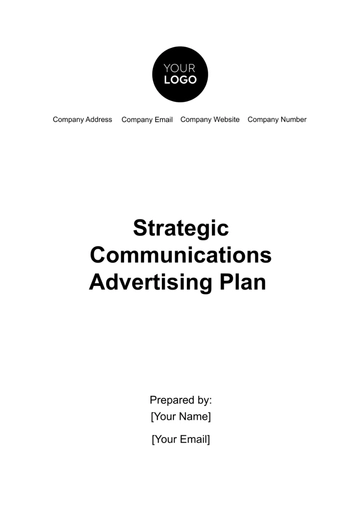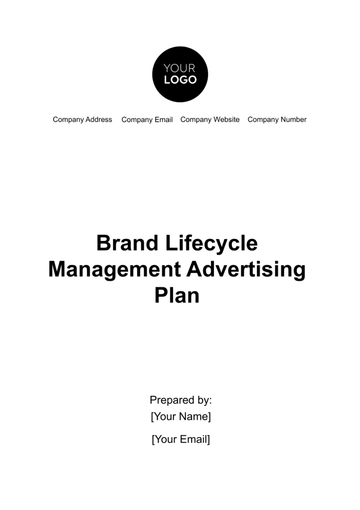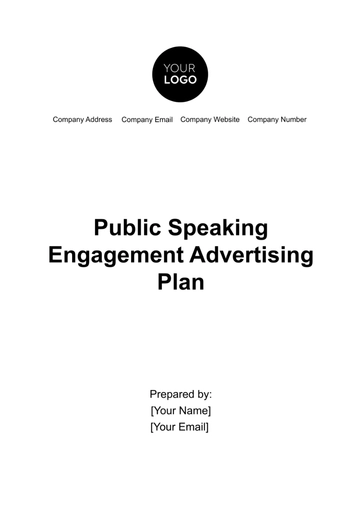Free Advertising Long-Term SEO Strategy Plan

I. Introduction
The primary objective of this Long-Term SEO Strategy Plan is to increase organic search traffic to our website by 50% over the next 3 years and achieve higher rankings for targeted keywords in our industry. This strategic initiative aims to enhance our online visibility, engage a broader audience, and ultimately drive more revenue for [Your Company Name].
II. Executive Summary
This Long-Term SEO Strategy Plan outlines our comprehensive approach to improving online visibility and search engine rankings. Our goal is to boost organic search traffic by 50% over the next 3 years, positioning us as a leader in the industry. This plan covers various aspects of SEO strategy, including keyword research, on-page and technical SEO, content strategy, and performance tracking.
III. Keyword Research and Analysis
A. Competitor Analysis
This analysis will serve as a foundation for developing our own SEO strategy and identifying areas where we can gain a competitive advantage. The table below provides a clear comparison of the key aspects between Competitor A and Competitor B in terms of their top keywords, content strategy, and backlink profiles.
Aspect | Competitor A | Competitor B |
|---|---|---|
Top Keywords | digital marketing services, SEO optimization | content marketing strategy, social media management |
Content Strategy | Active blog with weekly updates | In-depth whitepapers and case studies |
Backlink Profile | High-quality backlinks from industry-related websites | Diverse backlinks from authoritative sources |
B. Keyword Research
Our keyword research will focus on identifying high-potential keywords that are relevant to our products/services. Sample keywords may include "digital marketing services," "SEO optimization," and "content marketing strategy." These keywords will guide our content optimization efforts.
C. Keyword Mapping
To effectively optimize our website, we will organize the researched keywords into logical groups and map them to specific website pages. For instance, keywords related to "digital marketing services" will be mapped to our "Services" page, while keywords like "SEO optimization" will be linked to our "SEO Services" page. This approach ensures that each page is optimized for relevant keywords, improving our overall SEO performance.
IV. On-Page SEO
A. Content Optimization
Content optimization is a crucial aspect of our SEO strategy. We will optimize existing website content and create new, high-quality, and relevant content targeting identified keywords. This involves:
Keyword Integration: We will strategically incorporate target keywords into page titles, headings, meta tags, and throughout the content while ensuring natural readability.
Content Quality: We'll ensure that all content is informative, engaging, and valuable to our audience. High-quality content not only satisfies users but also pleases search engines.
B. Homepage Optimization
Page Title: "Leading Digital Marketing Services Provider - [Your Company Name]"
Meta Description: "[Your Company Name] offers top-notch digital marketing services to boost your online presence. Contact us today!"
Content: Engaging content describing our services and unique value propositions, incorporating keywords naturally.
C. Page Load Speed
Improving website page load speed is vital for user experience and SEO. We will implement the following:
Image Optimization: Compress and optimize images to reduce page load times without compromising image quality.
Minimize Code: Minimize unnecessary code and utilize browser caching to speed up page rendering.
D. Page Load Speed Enhancement
Implemented image compression techniques, reducing image sizes by 30%.
Minimized JavaScript and CSS files, resulting in a 20% improvement in page load speed.
E. Mobile Optimization
Given the increasing use of mobile devices, we'll ensure our website is mobile-friendly and responsive. This involves:
Responsive Design: Ensure our website layout adjusts seamlessly to various screen sizes, providing a consistent user experience.
Mobile-Friendly Testing: Regularly test our website's mobile-friendliness using Google's Mobile-Friendly Test tool.
V. Technical SEO
A. Website Audit
Audit Process
A comprehensive website audit is essential to identify and fix technical issues. Our audit will include:
Crawling and Indexing: Ensure search engines can crawl and index our site effectively.
Site Architecture: Review and improve website structure and navigation for better user experience.
Website Audit Findings
Identified and fixed crawl errors, resulting in better indexation.
Improved website navigation by restructuring the menu, enhancing user experience.
B. XML Sitemap
XML Sitemap Generation & Update
Creating and regularly updating XML sitemaps is crucial for search engines to understand our site's structure. This involves:
Sitemap Generation: Automatically generate XML sitemaps for all website pages, including new content.
Submission to Search Engines: Submit the sitemap to search engines like Google and Bing for indexing.
XML Sitemap Strategy
XML sitemaps updated weekly to include new blog posts and pages.
Sitemaps submitted to Google Search Console for prompt indexing.
C. Schema Markup
Schema Markup Strategy
Implementing schema markup enhances the visibility of our content in search results. We will:
Schema Types: Implement relevant schema types such as product schema, local business schema, and FAQ schema.
Structured Data Testing: Regularly test and validate schema markup to ensure accuracy.
Schema Markup Implementation
Product schema implemented for our product pages, displaying rich snippets in search results.
Structured data testing confirms accurate implementation.
D. SSL Certificate
Ensuring that the website has an SSL certificate is essential for security and SEO. We have:
SSL Implementation: Installed and configured an SSL certificate to secure the website.
HTTPS Migration: Properly migrated the website to HTTPS for a secure browsing experience.
VI. Off-Page SEO
A. Link Building
Campaign & Promotion
Link building is a vital off-page SEO strategy. We will:
Outreach Campaigns: Conduct outreach to industry-related websites for guest posting opportunities and link exchanges.
Content Promotion: Promote our high-quality content on social media and relevant forums to attract natural backlinks.
Link Building Initiatives
Secured guest posting opportunities on two industry-leading websites, resulting in authoritative backlinks.
Content promotion on social media led to organic backlinks from industry influencers.
B. Social Media Presence
Strategies
Leveraging social media platforms is essential for SEO. We will:
Content Sharing: Regularly share blog posts and informative content on social media to increase brand visibility.
Engagement: Engage with the audience through discussions, polls, and responding to comments and messages.
Achievements
Increased social media followers by 20% through engaging content and interactions.
Shared informative blog posts on social media, driving traffic to the website.
VII. Content Strategy
A. Editorial Calendar
Creating and maintaining a well-structured editorial calendar is crucial for consistent content production and publication. Our editorial calendar will include:
Content Topics: A list of content topics and titles based on keyword research, industry trends, and customer interests.
Publication Schedule: A detailed schedule outlining when each piece of content will be created, reviewed, and published.
Blog Post | Title | Target Keywords | Publication Date |
|---|---|---|---|
Blog Post 1 | "The Power of SEO in 2050" | "SEO in 2050," "Future of Search Engine Optimization" | January 15, 2050 |
Blog Post 2 | "10 SEO Trends for 2050 and Beyond" | "SEO trends 2050," "Future SEO strategies" | February 5, 2050 |
B. Blogging
Maintaining an active blog section is essential for engaging our audience and improving SEO. Our blogging strategy includes:
Content Creation: Regularly creating informative and engaging blog posts on relevant topics.
Keyword Optimization: Ensuring that each blog post is optimized for specific target keywords.
Blog Post Frequency: One new blog post every week.
Word count: Each post will be 1,500 words or more, providing in-depth information on the topic.
Keywords and links: Blog posts will incorporate relevant keywords naturally and include internal and external links for added value.
VIII. Performance Tracking
A. Google Analytics
Approach
Monitoring website traffic, user behavior, and conversion rates using Google Analytics is essential for assessing the effectiveness of our SEO efforts. Our approach involves:
Conversion Tracking: Setting up goals and e-commerce tracking to measure conversions.
Traffic Analysis: Analyzing organic search traffic, user demographics, and user flow through the website.
Google Analytics Metrics
Organic search traffic increased by 40% in the past three months.
Bounce rate reduced by 15% due to improved content and page load speed optimizations.
B. SEO Tools
Strategies
Utilizing SEO tools is crucial for tracking keyword rankings, backlinks, and website performance. We will use tools like SEMrush and Ahrefs to:
Keyword Tracking: Monitor keyword rankings and identify opportunities for improvement.
Backlink Analysis: Keep track of backlinks, their quality, and potential toxic links.
SEO Tool Insights
Targeted keyword "Digital Marketing Services" moved from position 15 to position 5 in Google search results.
Discovered and disavowed three low-quality backlinks to improve the website's link profile.
IX. Reporting
A. Monthly Reports
Regular reporting is vital to review progress, and key performance indicators (KPIs), and recommend adjustments to the strategy. Our monthly reports will include:
Traffic Overview: An overview of website traffic, including organic search traffic and other sources.
Keyword Rankings: Tracking the performance of targeted keywords in search engine rankings.
Content Performance: Analyzing the engagement and impact of published content.
B. Monthly Report Highlights
Organic search traffic increased by 10% compared to the previous month.
Three target keywords reached the top 3 positions in search results.
The blog post titled "The Power of SEO in 2050" received 1,200 views and 300 social shares.
X. Conclusion
This Long-Term SEO Strategy Plan outlines our commitment to enhancing our online presence and search engine visibility. By strategically allocating resources, optimizing our website, and consistently creating high-quality content, we aim to achieve our objective of increasing organic search traffic by [50%] over the next three years.
Our focus on on-page and technical SEO, off-page efforts such as link building, and regular performance tracking will ensure that we stay ahead of competitors and adapt to evolving SEO trends. We are confident that this comprehensive strategy will not only boost our online visibility but also contribute significantly to our business growth.
- 100% Customizable, free editor
- Access 1 Million+ Templates, photo’s & graphics
- Download or share as a template
- Click and replace photos, graphics, text, backgrounds
- Resize, crop, AI write & more
- Access advanced editor
Build lasting online presence with the Advertising Long-Term SEO Strategy Plan Template from Template.net. This editable template, customizable via our AI Editor Tool, guides you in developing a comprehensive SEO strategy, focusing on sustained growth and visibility in search engine rankings. Craft a strategic plan that elevates your brand's online authority and drives long-term digital success.
You may also like
- Finance Plan
- Construction Plan
- Sales Plan
- Development Plan
- Career Plan
- Budget Plan
- HR Plan
- Education Plan
- Transition Plan
- Work Plan
- Training Plan
- Communication Plan
- Operation Plan
- Health And Safety Plan
- Strategy Plan
- Professional Development Plan
- Advertising Plan
- Risk Management Plan
- Restaurant Plan
- School Plan
- Nursing Home Patient Care Plan
- Nursing Care Plan
- Plan Event
- Startup Plan
- Social Media Plan
- Staffing Plan
- Annual Plan
- Content Plan
- Payment Plan
- Implementation Plan
- Hotel Plan
- Workout Plan
- Accounting Plan
- Campaign Plan
- Essay Plan
- 30 60 90 Day Plan
- Research Plan
- Recruitment Plan
- 90 Day Plan
- Quarterly Plan
- Emergency Plan
- 5 Year Plan
- Gym Plan
- Personal Plan
- IT and Software Plan
- Treatment Plan
- Real Estate Plan
- Law Firm Plan
- Healthcare Plan
- Improvement Plan
- Media Plan
- 5 Year Business Plan
- Learning Plan
- Marketing Campaign Plan
- Travel Agency Plan
- Cleaning Services Plan
- Interior Design Plan
- Performance Plan
- PR Plan
- Birth Plan
- Life Plan
- SEO Plan
- Disaster Recovery Plan
- Continuity Plan
- Launch Plan
- Legal Plan
- Behavior Plan
- Performance Improvement Plan
- Salon Plan
- Security Plan
- Security Management Plan
- Employee Development Plan
- Quality Plan
- Service Improvement Plan
- Growth Plan
- Incident Response Plan
- Basketball Plan
- Emergency Action Plan
- Product Launch Plan
- Spa Plan
- Employee Training Plan
- Data Analysis Plan
- Employee Action Plan
- Territory Plan
- Audit Plan
- Classroom Plan
- Activity Plan
- Parenting Plan
- Care Plan
- Project Execution Plan
- Exercise Plan
- Internship Plan
- Software Development Plan
- Continuous Improvement Plan
- Leave Plan
- 90 Day Sales Plan
- Advertising Agency Plan
- Employee Transition Plan
- Smart Action Plan
- Workplace Safety Plan
- Behavior Change Plan
- Contingency Plan
- Continuity of Operations Plan
- Health Plan
- Quality Control Plan
- Self Plan
- Sports Development Plan
- Change Management Plan
- Ecommerce Plan
- Personal Financial Plan
- Process Improvement Plan
- 30-60-90 Day Sales Plan
- Crisis Management Plan
- Engagement Plan
- Execution Plan
- Pandemic Plan
- Quality Assurance Plan
- Service Continuity Plan
- Agile Project Plan
- Fundraising Plan
- Job Transition Plan
- Asset Maintenance Plan
- Maintenance Plan
- Software Test Plan
- Staff Training and Development Plan
- 3 Year Plan
- Brand Activation Plan
- Release Plan
- Resource Plan
- Risk Mitigation Plan
- Teacher Plan
- 30 60 90 Day Plan for New Manager
- Food Safety Plan
- Food Truck Plan
- Hiring Plan
- Quality Management Plan
- Wellness Plan
- Behavior Intervention Plan
- Bonus Plan
- Investment Plan
- Maternity Leave Plan
- Pandemic Response Plan
- Succession Planning
- Coaching Plan
- Configuration Management Plan
- Remote Work Plan
- Self Care Plan
- Teaching Plan
- 100-Day Plan
- HACCP Plan
- Student Plan
- Sustainability Plan
- 30 60 90 Day Plan for Interview
- Access Plan
- Site Specific Safety Plan



